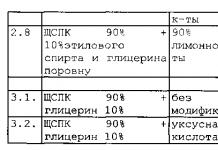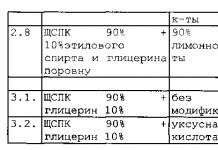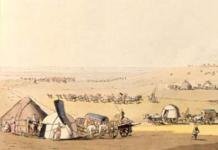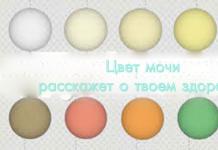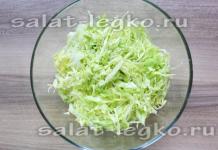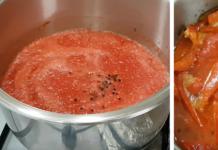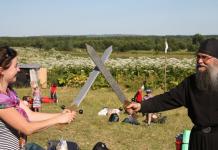Creating a beautiful flower bed is akin to art. By combining plants and flowers, you can bring to life intricate patterns and designs that will become an original decoration for your garden plot. There are various forms of flower beds, thanks to which the flower garden will always look beautiful and neat.
From our article today on “Dream House” you will learn what forms of flower beds there are, as well as how to recreate this or that flower garden yourself.
Geometric flower beds
The classic approach to landscape design involves creating a flower bed of the correct geometric shape. It can be a circle, oval, square, rectangle, triangle, etc. Geometric flower beds are good because they are easy to make yourself and, moreover, they look harmonious in any landscape.


Flower bed shaped like a rectangle

Beautiful rectangular flowerbed
Before choosing the shape and size of the flower bed, you need to determine in which area it will be located. As a rule, geometric flower beds look best on a flat, well-kept lawn. However, the geometry of the flower bed must be clearly visible from all sides, otherwise the object will look sloppy. To do this, experts recommend paying attention to two important details:
- diagram of the future flower bed;
- planting density of plants and flowers.
Creating a design for a triangular, rectangular or any other geometric flower bed is not at all difficult. You just need to prepare the area by drawing the outline of the future object on it. As for the density of planting flowers, much depends on the characteristics of their growth, as well as on how many varieties you use in the flower garden. For example, if the flower bed consists of identical plants of the same color, then they need to be planted like a “carpet”, as close to each other as possible. If there are free areas left in the flower garden, this will disrupt the beauty of the shape and visually spoil the geometry of the figure.

Flowerbed shape photo

If the flower bed includes plants of different shades and sizes, then their planting scheme requires careful planning. Most often, the tallest plants are planted in the center of the flower garden, and the brightest ones are planted around the office, which allows you to emphasize the shape of the object.


Shapes of flower beds photo

Shapes of flower beds photo
Flowerbeds of square, round or rectangular shape can be made multi-tiered. To do this, the tallest plants are placed in the center, and each subsequent row is filled with lower flowers. Ultimately, the flowerbed will resemble a pyramid or a multi-tiered cake. However, to create a beautiful shape, it is important that plants in the same row have the same height.


To emphasize the geometric correctness of the flower bed, you can use auxiliary elements, namely, edging. For example, a round flowerbed can be decorated with a fence made of stones, and a flowerbed in the form of a square or rectangle can be decorated with an edging made of wooden beams or pegs.


Round flower bed with stone border photo

Irregularly shaped flower beds
Irregularly shaped flower beds look no less impressive. The phrase “irregular shape” should be understood as the absence of classical geometry. For example, such a flower garden can be planted in the form of wavy lines, arcs, abstract patterns, etc.

Shapes of flower beds photo

Shapes of flower beds photo

Irregular shaped flower bed

DIY flower bed shapes photo
An irregularly shaped flower bed can also be created as a combination of different flower beds. For example, in one area there are small round flower beds, which are connected by a wave-like covering of bright flowers and plants. To make the composition look harmonious and complete, the areas between the flower beds are filled with gravel, fine or. To create a flowerbed of an unusual and multifaceted shape, you must first develop a diagram by drawing its outline on the soil.

Flower beds - shape, size, color, patterns and ornaments

Flower beds of unusual shapes
Please note that the more complex the shape of the flowerbed, the more varied its filling should be. Therefore, select plants so that they bloom either simultaneously or alternately.
In addition, in order for the original shapes of the flower beds to look neat and beautiful, you need to take care of the combination of plant shades. The filling of a flower bed can be either contrasting or close in color, but in the second case it is important that the shades of the plants do not merge with each other, otherwise the flower bed will lose its expressiveness.

Beautiful flower bed shape

Original flower beds of different shapes
Figured flower beds
Figured flower beds, also called “arabesques,” resemble paintings drawn by nature itself. Arabesques can be made in any form, but most often preference is given to floral ornaments and patterns.
For example, the shape of such a flower bed may resemble the outline of a butterfly, flower, insect, etc. Creating such a beautiful flower garden is a complex and time-consuming process. First, you need to draw a diagram of the future flower bed on paper, thinking through not only its outlines, but also the filling patterns. For example, a flowerbed in the shape of a flower may consist of multi-colored petals, and the wings of a “butterfly” may be decorated with intricate wave-like patterns. Typically, figured beds are a continuous flowering type, so it is important that all plants mature and bloom at the same time.


Shapes of flower beds and flower beds photo


Flowerbed in the shape of a butterfly
To create contours and patterns inside arabesques, it is recommended to use the brightest flowers, planting them in dense rows.
If you don’t know what shape to make a flowerbed, start from the characteristics of the plants. For example, if a flowerbed is filled with roses, you can design it in the shape of a heart. Yellow flowers will look good in sun-shaped flower beds, while blue flowers will look good in river or cloud-shaped flower beds.

Flowerbed in the shape of a heart

Flowerbeds of geometric shapes

Flowerbed in the form of a "stream"
A bright flower “stream” flowing through your site will become an expressive decoration of your landscape design. Despite such an original shape, there is nothing difficult in creating such a flower bed.
Every garden plot should have a flower bed. Even a small bright spot will dilute the color monotony of garden greenery and become a source of positive emotions. Flower beds play an important role in landscape design. In one case, they can be a link between the house and green spaces. In another - to become the central element around which the remaining components of the landscape design of the garden plot will be grouped.
Often the choice falls on round flower beds; their design can be very diverse and depends both on the decision of the landscape style of the garden and on the space allocated to them.
A round flowerbed is a classic of garden design. Along with flower beds of other forms, it has been present in garden design for more than one century. Over such a long period of existence, it has undergone some changes, and new plants introduced into garden culture, their various varieties and forms make it possible to make the color content of a round flower bed unique.
The choice of location for a flower garden depends on existing buildings and plantings. It should not destroy the existing composition, but serve as its continuation, perhaps the final touch, giving the entire appearance of the garden a finished look.
The traditional purpose of a round flower bed is for ceremonial purposes. Often it serves as a decoration for the recreation area in front of the house. Such a flower garden especially benefits from its proximity to a lawn. Against a green background, a contrasting color spot attracts the eye.
The photo shows how much more attractive the front area near the house has become due to the presence of a bright flower garden.

If there is not enough free space, and you really want to make round flower beds with your own hands, you can make several small ones, arranging them in a row or in any other order.

Scheme for creating several small round flower beds
An unusual and interesting option is to enclose a round flowerbed inside a square flower bed, separating it with a gravel backfill path. Feng Shui uses this form to increase energy. And the circle in this eastern practice is a symbol of perfection. This flower garden looks very good at the intersection of paths.

Options for different layouts of round flower beds enclosed in a square
An important point is the size of the future garden design element. It must be correlated with the area of the site on which it will be located. In a large space, a small flower garden will be lost, and in a small space, a huge flower bed will look ridiculous. The ease of caring for plants must also be taken into account. No one has canceled regular weeding and fertilizing, but reaching the center of a large flower garden will be problematic.
When choosing a location for round flower beds, you should be guided by time-tested recommendations.
Without flowers, the area looks boring and uninteresting. Properly decorated flower beds lift your spirits, because...
Patterns of landscape design
In order to successfully make a round flowerbed in the garden of a private house or in a country house with your own hands, you need to take into account the following rules of landscape design.
- Integrity of the composition.
The decorative design of any garden plot should be carried out according to a clearly thought-out plan. It is best to draw it on paper, noting on a scale all existing plantings and buildings, not forgetting about the uniform design style of the site and the color harmony of both existing plants and those that are going to be planted. Only in this case will the created round flower garden organically fit into the surrounding landscape.
- Plants should be placed taking into account their growth.
The tallest ones are placed in the background. Medium-sized ones in front of them - they attract the most attention, so their selection must be taken responsibly. The beauty of the flower garden is emphasized by the low-growing border plants that border it along the edge. The placement of flowers in a round flower garden is determined by its shape. The tallest plant is planted in the center, and each next tier will be lower than the previous one.

- Consider the architecture of the flower garden.
It can be either flat or domed, have a decorative fence or do without it. Inside the flower garden there is its own geometry. It is related to the location of plants. The simplest option is concentric circles, for which flowers are selected according to height and color. With the right selection, such a flower bed looks quite impressive. A more complex geometric solution is also possible, for example, a Viennese flower or a repeating geometric pattern. You can divide the flowerbed into sectors. The color scheme of this layout option can be either contrasting or consistent in the same color, but in different shades. An asymmetrical arrangement of colors is possible. How to make such a flower bed beautiful? Color spots from several flowers of the same species should be adjacent to decorative greenery, while none of the plants should shade the others.
Viennese flower bed diagram

An approximate version of a set of annual flowers for its contrasting design
- Marigolds are erect, orange in color, “Beach Season” variety. Height 80 cm.
- Ageratum high variety "Blue Bouquet". Height 60 cm.
- Snapdragon variety "Eldorado" with yellow flowers. Height 45 cm.
- Drummond phlox is white. Height 25 cm.
- Marigold thin-leaved 'Ursula' with yellow-brown flowers. Height 25 cm. It is enough to plant one bush at a time, which has the shape of a ball, completely covered with small flowers.
- Alyssum violet variety "Purple Queen". Height 15 cm.
- Ageratum variety "Blue Mink". Height 25 cm.
- Alyssum is white. Height 15 cm.
All of these annuals love similar growing conditions: they are not afraid of the sun, do not require daily watering and grow well in medium-fertile soils, taking root well after transplanting. Their seeds are easy to find on sale, but the seedlings will have to be grown first, otherwise they will bloom only in the second half of summer.
With the help of planted flowers, you can “draw” various pictures or ornaments - whatever the gardener’s imagination suggests.
When creating round flower beds in a country house or in the garden of a private house, you should not skip the planning stage, so as not to replant the plants later. Most of them do not like transplants, and some may simply not take root.
Flower garden planning
First, the plan is drawn on paper. The scale must be preserved. Therefore, it is necessary to know the exact dimensions of the future masterpiece. When creating a plan, it is good to use colored pencils. This way you can achieve the optimal color solution. Each plant must be marked on the plan. You should not plant too rarely - the effect of a carpet of plants will not work. When planting perennials, you must remember that the bushes grow over time.
Plant selection
It is important to immediately decide on the range of future plantings. There can be many options. In order not to get confused, they decide whether the set of plants will be perennial or will have to be updated annually. What flowers to plant, each owner of a summer cottage decides independently based on his preferences and capabilities. But it can be difficult for a novice gardener to make a choice, since the name of the flowers may not mean anything to them. In this case, it is better to opt for annuals, since most of them are unpretentious and easy to grow. They have another undeniable advantage: grown from seedlings, they begin flowering early, which usually continues throughout the season. With perennials, continuous flowering is much more difficult to achieve.

How to do it right? It is necessary to draw up a flowering schedule for the future inhabitants of the flower garden.
- Early bloomers: Bulbs and other primroses are the first to greet the season. They will be replaced by subulate phlox, daisies, pansies, dicentra.
- In late spring - early summer, lactiferous peonies, bearded irises, Matrona's noctule, oriental poppy, doronicum, brunnera, aquilegia, astilbe, and swimsuit will bloom.
- During most of the summer, various types of bells, lilies, daisies, daylilies, delphiniums, aconites, perennial carnations, centranthus, and yarrows delight the eye.
- In the second half of summer, phloxes, dahlias, gladioli, catnips, monarda, some types of anemones, and eustoma join the floral ensemble; you can learn more about growing them.
- At the end of summer and autumn, sedums, perennial asters, rudbeckias, and chrysanthemums will delight you with their flowering.
It is good if the flower garden contains various decorative cereals throughout the season.
A huge selection of plants will allow you to make a round flower bed always blooming. The main criterion when selecting plants is similar requirements for light, water regime, acidity and soil fertility. And the place where the plants will be planted must meet these requirements.
Work on creating a round flower garden
When the plants have been selected and the plan is ready, they begin to implement it on the ground. To make a round flowerbed, you need to place a peg in its center and tie a rope to it, the length of which is equal to the radius of the future flower bed. A full turn of the rope around the axis will mark its perimeter.
Before planting plants, it is necessary to carefully prepare the soil.
Soil preparation


After removing the debris, the layer of turf is removed, the ground is dug up, completely removing all, even the smallest, roots of weeds. This operation is especially important if the flower garden is planned to be planted with perennials. Even a small wheatgrass root can sprout very quickly and choke out cultivated plants. It is very difficult to clear it from an already planted flower garden without damaging the roots of the flowers. If the groundwater level is high, a drainage layer of small pebbles is required.
It is necessary to determine the acidity of the soil. Most gardeners like neutral or slightly acidic soil. Exceptions that like more acidic soil are conifers, hydrangeas, azaleas and rhododendrons, but they are not frequent guests in flower beds.
The easiest way is to analyze it in an agrochemical laboratory. But this is not available to everyone. There is an easier way: you need to take a closer look at the composition of the weed. If most of it is wheatgrass, then the soil is neutral; the predominance of woodlice, horsetail, small sorrel, plantain, and field violet indicates its increased acidity. When digging up the soil, you will have to add ash, which not only serves as a deoxidizer, but is also a good fertilizer containing potassium and many microelements.
Full mineral fertilizer will also be required. But it is better not to bring in fresh manure - most of the inhabitants of the flower garden cannot tolerate it. The best organic matter is humus and garden compost. Sometimes it is necessary to improve the soil structure. Sand is added to clayey, and clay to sandy. Add soil to give the flowerbed a convex shape.
Filling the flower bed
Plants can be planted when the ground settles, after about two weeks. It's better to do this starting from the center. There are planting standards per square meter for plants of different heights that are convenient to follow.
- Tall plants - 4 pcs.
- Medium height - 6 pcs.
- Low - 8 pcs.
- Ground cover - 9 pcs.
Plants of the same species are planted in groups of at least five (for large ones, at least three) to create a spot of color and eliminate excessive variegation.
A special case is conifers and small shrubs: most often, one specimen is enough. But there is an exception. It is very interesting to use begonias, combining them with or without conifers. In the first case, you can choose, for example, bright begonias of the same color, but in different shades, as in the photo. If coniferous plants are not provided, roses or begonias of calmer colors are appropriate, preferably pastel shades.

The final touch is the fencing
It will give the flower beds a finished look and allow the beauty of the planted plants to shine through even more. The fence has another important function - it will not allow weeds to penetrate from the lawn into the flower garden. There are many different plastic fences on sale. But a stone border looks much more organic and beautiful. It can be made of natural stone or consist of brick, small stone blocks or paving slabs. This type of fencing is also the most durable.
Creating a border from stones with your own hands is quite a labor-intensive, but completely doable task. Stones and bricks can be laid either with or without cement mortar. In the latter case, the support will be supported by its own gravity. The main disadvantage of such a fence is the possibility of overgrowing with weeds due to soil getting into the cracks between the stones. But you can easily change the geometry of the curb.
How to make a border from stones with your own hands
- Dig a trench around the perimeter of the flowerbed with a width equal to the size of the largest stone and a depth of 20 cm.
- Geotextiles are laid and sand is poured in a layer of 5 cm. The sand is wetted and compacted.
- If the curb is made of concrete, then you will need formwork into which the solution is poured. The stones are simply laid out beautifully. If necessary, they are fastened with cement mortar. A fence is also made from bricks or small concrete blocks.
In order to create a round flowerbed with your own hands, you need to put in a lot of effort. But the resulting result will warm the author’s heart for a long time with its beauty and uniqueness.

Lush flower beds and elegant flower beds at your favorite dacha require not only physical effort, but also knowledge to create, design and maintain them in proper form.
Flower garden or flower bed
What is the difference between a flower garden and a flower bed? Many novice summer residents are confused about these concepts. This is not surprising, because there is no clear definition.
A flowerbed is most often called a raised or flat piece of land that has a strict shape. Planting plants inside the flowerbed itself is also characterized by clear shapes, including geometric ones. The most common and popular option is a round or rectangular flower bed. This type of planting is a characteristic feature of urban decorative plantings and parks. Their clear shape goes well with straight paths, fountains, well-groomed bushes and trees.
A flower garden can have any shape. It looks more natural and natural, and is often used in natural gardens and parks. A flower garden allows for a freer choice of plants than a flower bed.
Creating beautiful flower beds and flower beds requires the correct selection of plants not only according to the general requirements for growing conditions, but also according to the following parameters:
- Harmonious color combination .
- Correct selection of height and dimensions . When planting plants, you need to take into account the speed at which they grow.
- Flowering time . A flower bed of annuals can consist of plants that bloom at the same time. In this case, after flowering it is replanted. Perennials are usually selected according to a different principle - plants take turns blooming throughout the season.
Advice: Do not create a large number of variegated flower beds on the site. It is enough to create one or two flower beds with your own hands, but carefully thought out and neat.
Types of flower beds
There are several types of flower beds that have specific features:
- Regular or geometric . Such forms of planting were very popular during the time of Versailles. The French park style requires a strict selection of plants according to flowering time and size, as well as color scheme. All plants in such a flowerbed are planted according to a clear pattern and form a specific pattern.
It is quite rare to create such flower beds with your own hands, as they are difficult to care for and troublesome to plant.
- Irregular or natural . In them, plants are planted more freely, most often in groups of at least 3 - 5 pieces to create a spectacular color spot. They actively use perennial plants, selected according to the principle of continuous flowering.
- Elevated or high . They consist of a fence and an internal part covered with fertile soil and planted with plants. The fence can be made of various materials. You can decorate a flowerbed at your dacha using stone, wood, or brick.
A tall flowerbed made of wild stone looks beautiful, with hanging or climbing plants planted in the spaces between it. This type of beautiful flower beds can also be used for growing vegetables, strawberries or spicy and medicinal herbs.
- Monoclumba consists of plants of the same type and color. It creates a spectacular, memorable color spot.
- Vertical design it is constructed from special containers stacked on top of each other and filled with nutrient substrate. In the spaces between the containers, a variety of plants are planted, mostly ampelous and climbing, with a cascading shape.
A vertical flower bed at the dacha can be supplemented with flowering plants and berries, for example, garden strawberries, which produce beautiful shoots - mustaches.
Recommendation: Decorating flower beds at your dacha will be more beautiful and neat if you limit yourself to a few types of plants. 5 - 6 spectacular and compatible flowering and deciduous perennials or annuals are enough.
How to make a simple flower bed
The easiest way is to create a flower bed in your dacha with a simple geometric shape. A round, slightly raised flower bed in the middle of the lawn or in front of the entrance to the house looks very impressive and does not require much effort to create.
- Choose a suitable location . Water should not stagnate here. Avoid very shady places - most plants love light.
- Mark a round flowerbed extremely simple. You only need two pegs and a rope. One peg is driven into the center of the future structure, and with the second peg, tied to a stretched rope, the contours of the future circle are traced.
- Make sure the soil drains well . If the soil is too dense, remove its surface layer, drain it and add fresh fertile and loose soil. You can give the flowerbed a rounded, convex shape by pouring a larger layer of soil in the center than at the edges. This way the plants will look more impressive, especially if low-growing or creeping species are chosen.
- Apply complex fertilizer to the surface layer long-acting. This will prolong the flowering and attractiveness of the flower bed and make it easier for you to care for the plantings.
- Carefully remove all weeds, rocks and debris.
- Plant such a flower bed from the center. A so-called focal plant is often placed in it. It could be a beautiful colorful flower or an attractive foliage plant such as yucca. Sometimes a garden statue or vase is placed in the center of the flowerbed.
- Place all the plants according to the diagram.
- Water the plantings Loosen the empty spaces to prevent a crust from forming.
- The edge of the flowerbed can be framed with small pebbles, pebbles, wooden rods or a special ready-made low fence for flower beds.
Tip: Making such a flowerbed with your own hands is not at all difficult if you select the right plants in advance and create a clear planting plan.
How to make a flowerbed from old tires
The easiest way to make a flowerbed at the dacha from available materials is to use old discarded tires. There are several options for working:
- Just use the tire as a frame for a future flower bed.
- Show your imagination and create not just a flower garden, but a real work of landscape art.

The simplest flower bed is made from an ordinary tire, which is installed in the selected location. If there is dense soil under the future flowerbed, the water will not be absorbed when watering the plants, but will spread unsightly in all directions, washing the substrate out of the tire. To prevent this from happening, dig up the soil under the tire, slightly digging it into the ground. Or make a shallow hole and fill it with crushed stone for drainage. Install the tire, fill it with soil and you can plant the plants.
Several tires placed one on the other will make a beautiful high flower bed. Tires can be painted in different colors or shaped like a flower, a cup, or even a swan. Used tires with soft worn tread can be easily cut into a variety of shapes. By turning out such a tire, you will receive a free and elegant form for a flower bed at the dacha using improvised materials.

How to make a multi-tiered flower bed
Another type of spectacular planting at the dacha is a multi-tiered flower bed for growing hanging plants. You can create it from suitable containers of different shapes, ready-made shapes, tires, boards, stone, even broken furniture. The main condition is that the plantings should be arranged in tiers, one above the other.
- First, the area for the flower bed is prepared.
- The first tier is being built. It should be the strongest and most stable - it will bear the weight of the entire structure.
- The next tiers are installed one above the other so that there is space left to fill with soil.
- Selected plants are planted in the resulting “pockets” of soil.
- A multi-tiered flower bed is watered in stages, starting from the very top.

Numerous photos of flower beds at the dacha fill the Internet. From there you can get a lot of ideas or come up with your own unique options.
Flower bed made of plastic bottles
If you have a whole collection of plastic bottles, don't throw them away. They will become the basis of an original design for your dacha.
How to make a flower bed or flower garden at the dacha from such a strange material? Bottles are used in different ways depending on their size. Large containers can make an original flower bed made from plastic bottles. They are placed on their side and one of the walls is cut out. This will be the top part of the flowerbed, and the container itself will be a container for the soil. From several bottles you can create a decorative composition, for example, an elegant children's train. Or paint the bottles, giving them the appearance of funny little animals. Children will be very happy with such a decorative garden. Plant unpretentious plants in containers, remembering that they have a limited amount of soil.

Another option for a flower bed made of plastic bottles is a kind of “high beds”, the frame of which is created from a row of plastic bottles dug in with their necks down. They can be painted in different colors or filled with colored powders. Such fences are very durable and elegant; they can be used not only for flower beds, but also for a convenient and beautiful vegetable garden.
Another type of symbolic planting is an “eternal flowerbed” made from the same bottles of different colors dug into the ground. Their bottoms resemble flowers. Such a decorative detail will greatly decorate the dacha in late autumn or winter.

Plastic bottles can become an inexhaustible source of various design ideas for your site.
Brick flowerbed
A brick flowerbed is a classic option for a summer residence. The simplest design is plantings lined with bricks around the perimeter in any shape. An “advanced” option is bricks laid on top of each other at an angle and half dug into the ground. But a brick flowerbed can be much more interesting and complex.
Such a flower bed is laid out according to a pre-calculated pattern.
- The outline of the future structure is marked.
- A hole is dug and filled with drainage (crushed stone, pebbles and sand).
- Brick walls are being built. The first rows are not held together with mortar. This is done to allow excess moisture to flow freely and eliminate water stagnation, which can lead to plant death.
- The next rows are laid on cement mortar.
- If the flower garden is tall, it is advisable to slightly tilt the masonry inward so that the earth does not “push” it out.
- The finished product is left for about a week to allow the mortar to set and strengthen the masonry.
When designing a site, in addition to landscaping work, you should not forget about landscape design.
After all, the appearance of the garden is not only your face, but also a reflection of the owner’s well-being.
At the design stage, it is worth thinking about creating a flower garden as an absolute decoration not only for the dacha, but also for the personal plot.
The simplest method of flower decoration is a round flower bed, which you can bring to life with your own hands.
Location and size of the round flower bed
First you need to decide on the location. A flowerbed is a bright design element designed to attract attention, so there is no point in pushing it into the far corner of a garden plot or hiding it in the shade of trees. It is a kind of accent, so a sunny, clearly visible place will be the ideal solution for creating it.
It is also important to choose the right size. A small flower garden in the middle of a large area of lawn will look ridiculous. And if you place a whole composition of several round flower beds of different sizes there, it will immediately acquire dynamism and a finished look.
A flower garden that is too large within a limited space will not be visible and will lose its integrity. Therefore, the surrounding situation should be taken into account for a harmonious combination of garden elements.

Also important is the relationship between the size of the largest plant in the composition and the flower bed, which should be at least twice its height.
For a more visual representation, you should start by drawing up a diagram of round flower beds, and only then transfer them to nature. There are many options, ideas are limited only by your imagination. This can be a single flowerbed with an original abstract or symmetrical design, or part of a larger flower bed.

Design scheme for several round flower beds on the site
A chain of bright circles following each other will fit perfectly on a long elongated section of the lawn, the green color of which serves as an excellent background for flowers. When implementing the plan, choose a color scheme, preferably in several options.
Selection of assortment
Competent selection of assortment is an important stage. In order for a round flowerbed to delight you with its flowering all year round, it is necessary to select plants with different flowering periods. However, you should know that their height usually increases towards the center.
To begin, make a list of the plants that will make up your composition, draw a color sketch on tracing paper in three versions for each season and see what your flowerbed will look like. Adjust if necessary. For example, empty areas can be sprinkled with a thin layer of decorative mulch.
Try to select plants with similar requirements for moisture, light, and soil; this will make it easier to choose what to plant in a round flowerbed and will also make caring for it easier.
In addition, you can use low-growing shrubs, various small forms, and decorative fills.
The table shows only some of the plants used.
|
Growing conditions |
Plant type |
|
Shady and semi-shaded areas |
Aquilegia, aconite, bergenia, periwinkle, brunnera, Volzhanka, heuchera, doronicum, dicentra, saxifrage, broadleaf bell, lily of the valley, daylily, ranunculus, lupine, primula, sweet violet, phlox, hosta |
|
Sunny areas |
Alyssum, aster, begonia, helenium, dahlia, gypsophila, gladiolus, delphinium, iris, canna, clematis, bellflower, daylily, onion, poppy, peony, cyanosis, stachys, phlox, yarrow, hosta, heuchera, edelweiss |
|
Wet areas |
Astilbe, aquilegia, periwinkle, bergenia, buzulnik, volzhanka, anemone, heuchera, iris, dicentra, daylily, marigold, forget-me-not, peony, ferns, primrose, cyanosis, phlox, violet, hosta |
|
Dry areas |
Alyssum, speedwell, cornflower, tenacious, kermek, saxifrage, catnip, flax, lupine, spurge, young, sedum, stachys, evening primrose |
|
Slightly acidic soil |
Adiantum, anemone, periwinkle, Chinese carnation, carnation grass, dicentra, saxifrage, bellflower, multileaf lupine, ranunculus, young, forget-me-not, sedum, primrose, cyanosis, phlox |
|
Neutral or slightly alkaline soil |
Adonis, speedwell, heuchera, hesperis, gypsophila, iberis, saxifrage, clematis, cornflower, peony, primrose, rose, erinus |
Site preparation and fielding
Having decided on the location, size and assortment, let’s consider how to make a round flowerbed with your own hands. To create it, you need fertile soil, the layer thickness of which is at least 40-50 cm.
It must be cleared of debris, large stones, weeds and large rhizomes; large lumps must be broken up. After digging, the surface is leveled with a rake and lightly compacted. Moreover, the flowerbed is given a convex shape, the edges are raised 10-15 cm above the surface of the lawn.

To correctly position the circle, you will need a peg, which is driven into the center of the future flower bed. Then a rope is tied to it, the length of which is equal to the radius. At the other end we tie a second peg, with which we will draw a circle.
When decorating a flower bed, we apply the drawings by eye on the day of planting if the sizes are small, and with the help of a grid for large volumes and complex patterns.

One of the many possible schemes for forming a flower bed
The layout grid consists of squares made into reality using a rope or fishing line and pegs. We plant flowers on them in accordance with the planting scheme.



